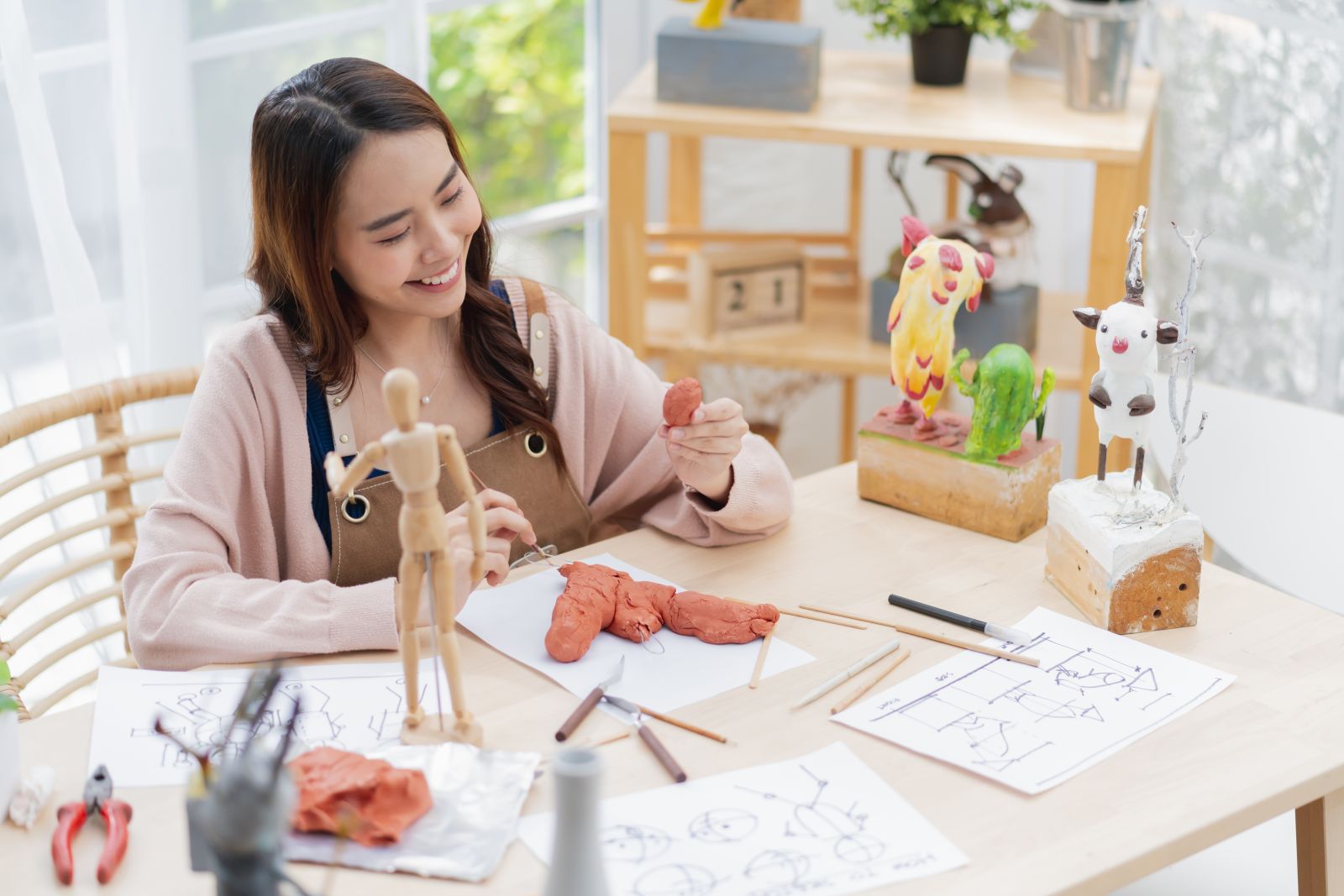
- 357 Lê Hồng Phong, P.2, Q.10, TP.HCM
- Hotline 1: 1900 7060
Hotline 2: (028) 3622 8849
Mỗi tuần một topic IELTS Speaking: Hội họa
Một chủ đề khá nan giải cho thí sinh trong phần thi IELTS Speaking mỗi khi gặp đó chính là chủ đề Hội họa - Art. Vì vậy, để hỗ trợ các bạn trong quá trình ôn luyện IELTS Speaking của mình, Phương Nam xin gợi ý cho bạn một số câu hỏi về chủ đề hội họa có thể xuất hiện và câu trả lời tham khảo trong bài viết dưới đây.

Một bức tranh đẹp cũng như một nghĩa cử cao đẹp. - Vincent Van Gogh
Part I:
Are you good at art?
Did you learn art at school when you were a child?
What kind of art do you like?
Is art popular in your country?
Have you ever been to an art gallery?
Do you think children can benefit from going to art galleries?
Part II:
Describe a piece of art you like.
You should say:
Part III:
What kind of art do you enjoy?
What are the tradition art forms in your country?
What makes a good painting?
What do you think children should study art at school?
How can children benefit from learning art?
How has art changed in the last few decades in your country?

Tôi mất bốn năm để vẽ như Raphael, nhưng mất cả đời để vẽ như một đứa trẻ. - Pablo Picasso
Are you good at art?
I’m afraid not, I’m hopeless regarding art in general. I had art classes about one to twice a week when I was in primary and middle school but in the end, all I could draw was like a 2D house on a hill, with a sun in the corner and birds in the sky that looked like the letter m.
What kind of art do you like?
I can’t remember how many art kinds there are but if the kind of art you’re mentioning are paintings, movies or books,… I’m fond of the cinema kind of art, especially Japanese animation - anime since I tend to watch movies a lot and sometimes read articles about what makes the movies great or bad and what the director wanted to imply in the movies.
Have you ever been to an art gallery?
Yes, I’ve once been to an art gallery. It was a gallery organised by an art teaching centre where my teacher at university is drawing and he invited me to come. It was a decent gallery with paintings in many well-known art styles drawn by both students and teachers in the art teaching centre.
Do you think children can benefit from going to art galleries?
I’ve never thought about this myself before. Fortunately, I’ve read a short article about this before and they said that art galleries help children to develop their analytical skills as it encourages them to think and analyse what the artists wanted to imply in their works.
I don’t actually have a piece of art that I really like. However, among the things you don’t like, there’s still one you dislike the least and for me, it’s a portrait painting of a tiger lying on the grass, under a chair with an animal-skin carpet posture. It’s a work created by the teacher who taught my university teacher to draw when he started learning how to draw at the art centre I’ve mentioned before. You might have guessed where I first saw it by now. It was the time when I came to the gallery organised by the art centre. While most of the artworks there were about nature, scenery or a person that mainly show the artists’ skills and don’t have such huge meaning implied in them, except for this tiger artwork. Despite trying, I couldn’t come up with any idea what the artist thought when he drew it. At that time, my teacher was also there so I asked him if could figure anything out since he was the artist student but he couldn’t either. What meaning could a painting of a tiger, happily lying in front of a chair like a carpet in the middle of the woods, have? In the end, I couldn’t think up any idea that seemed reasonable and that’s why it intrigued me a lot, even up until this time. At the end of the day, I took a picture of it and used the tiger’s face as my avatar on facebook.
What makes a good painting?
I must admit I have never thought about this question before. However, in my opinion, the heart and soul of the artist during the creation of a painting is the most important factor in order to have a good painting. My friends who are fond of art tell me that Van Gough used to say, if I remember correctly, “Paintings have a life of their own that derives from the painter's soul.” Personally, I think it’s quite reasonable. In a different kind of art, music, if the people that together create a song put their emotions and their heart into it, definitely the song when it comes out will touch millions of people’s hearts.
What are the tradition art forms in your country?
There are quite a few traditional art forms in Việt Nam and among them, Đông Hồ folk paintings and Ceramic potteries. Đông Hồ folk paintings are popular as the people in Đông Hồ village are the only ones that know how to create a painting with full natural materials. Vietnamese traditional ceramic pottery dates back to the time after the Chinese invasion, during the Lý Dynasty. Although being influenced by Chinese culture, Vietnamese ceramic pottery still kept its distinctive features until the modern days.
How has art changed in the last few decades in your country?
I don’t know much about art in Việt Nam but I used to read an article on the news. It interviewed a painter named Thanh Chương, president of an art association. He said since the renewal process started in 1986, there had been a breakthrough in thoughts and an increase in impression of fine art within the country. More painters and art critics gained their fame, more people interested in learning fine art and more fine art training institutions had been established.
What do you think children should study art at school?
I think it’s a good idea to teach them to put their mind and heart into what they are doing. Moreover, as I have answered, teaching art to children will also teach them analytical skills and other fundamental skills. Art can help children engage better in class and improve their productivity in studying.

Màu sắc, giống như đường nét, đi theo sự thay đổi của cảm xúc. - Pablo Picasso
Qua đề mẫu và câu trả lời gợi ý cho chủ đề Speaking IELTS về hội họa mà các thí sinh thường gặp ở trên, Phương Nam mong bài viết này có ích cho các bạn và xin chúc các bạn có một quá trình luyện nói hiệu quả và đạt thành tích cao trong kì thi.
Tags: Chủ đề hội họa, IELTS Speaking, Chủ đề Speaking IELTS, Ôn luyện IELTS Speaking, Luyện nói, luyện thi IELTS, thi nói IELTS, chủ đề luyện nói IELTS.
THƯ VIỆN LIÊN QUAN

Hãy cùng Phuong Nam Education xem qua bộ đề thi thật IELTS Speaking trong tháng 7/2023 cùng câu trả lời tham khảo cho phần Speaking part 2 nhé!

Hãy cùng Phuong Nam Education tham khảo một số câu hỏi thường gặp trong phần thi nói IELTS cùng cách trả lời gợi ý về chủ đề sách nhé.

Nếu bạn đang trong quá trình ôn luyện IELTS Speaking, hãy để Phương Nam giới thiệu đến bạn một đề IELTS Speaking về chủ đề thời tiết nhé.

Speaking là một trong những kỹ năng sẽ tác động trực tiếp đến kết quả IELTS tổng của bạn. Để có thể thực hiện tốt phần thi, trước hết cần phải hiểu...
Hoặc gọi ngay cho chúng tôi:
1900 7060
 | Chính sách bảo mật thông tin | Hình thức thanh toán | Quy định chung
| Chính sách bảo mật thông tin | Hình thức thanh toán | Quy định chung
Giấy chứng nhận đăng ký doanh nghiệp số 0310635296 do Sở Kế hoạch và Đầu tư TPHCM cấp.
Giấy Phép hoạt động trung tâm ngoại ngữ số 3068/QĐ-GDĐT-TC do Sở Giáo Dục và Đào Tạo TPHCM cấp